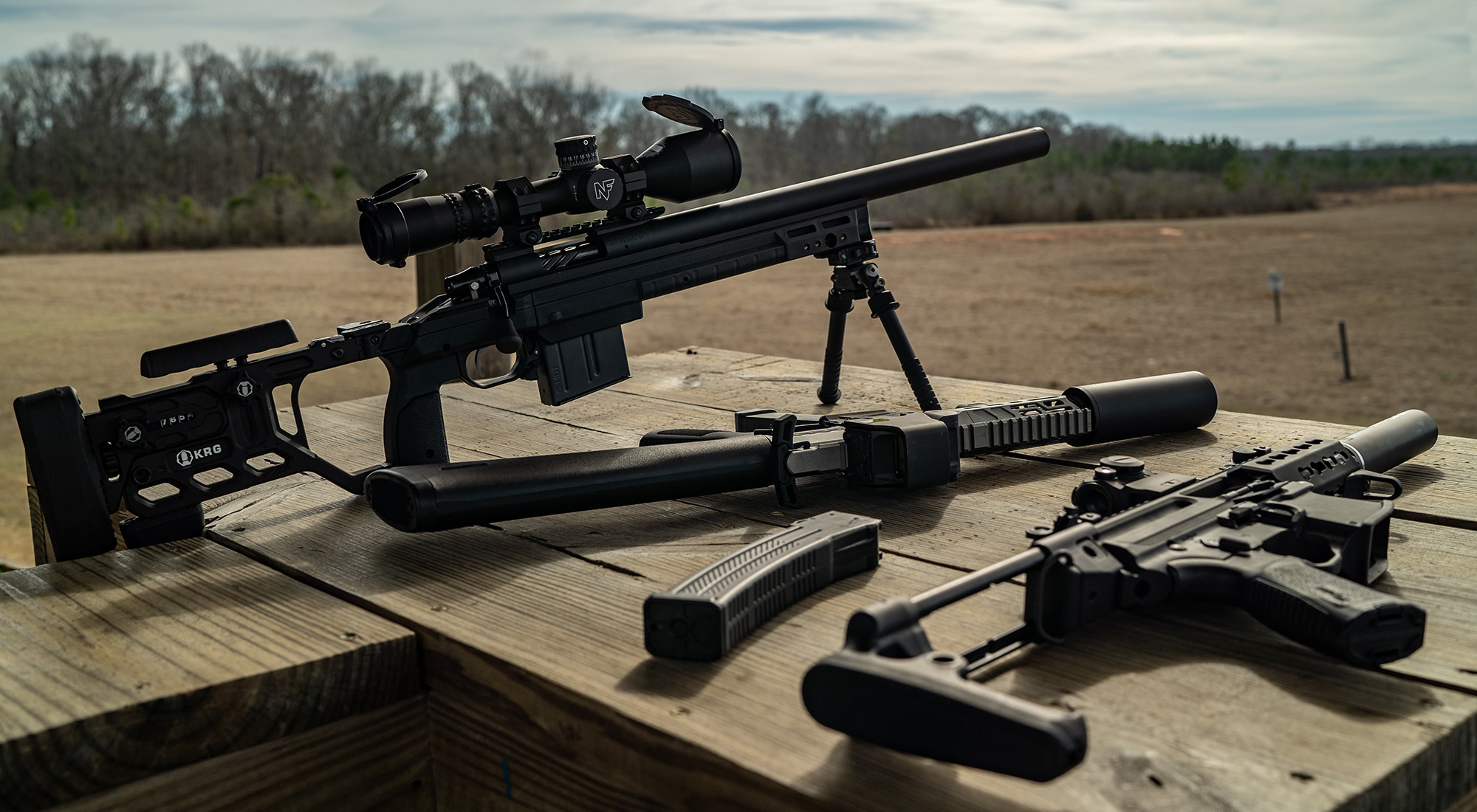CLEANING YOUR SUPPRESSOR
Suppressor Varieties and How to Clean Each

Cleaning Rifle Suppressors
Rifle suppressors chambering rounds like 5.56 and 7.62 NATO don't need to be cleaned. The rifle creates a high pressure where debris and carbon are less likely to remain. An occasional solvent soak and/or a thin end of a solvent brush is all a rifle suppressor will need.
Cleaning Pistol Suppressors
Pistol suppressors need the least amount of cleaning, unless you are using bare lead ammo. But, they need to be cleaned regularly as Pistol suppressors get dirty for a variety of reasons. Pistols are low-pressure compared to rifles and don't self-clean like rifles tend to do.
Cleaning Rimfire Suppressors
Rimfire suppressors need a different cleaning regimen. Rimfire suppressors are not only low-pressure, but also use dirty, lead ammo. Rimfire suppressors require the most frequent cleaning schedule.
Before you clean any suppressor, make sure you grab rubber gloves and safety glasses to protect yourself from dangerous cleaning solvents. Before you clean, always read your suppressor's manual for specific cleaning and care instructions.
Cleaning Fully Welded Suppressors
Cleaning a fully welded suppressor is simple. While performing these duties, be aware that there are solvents on the market that can reduce the finish on your suppressor. Solutions like CLR, The Dip, and others can damage your suppressor's finish. Research a preferred solution before using it on your investment. One way to reduce the risk of your tube finish is to seal one end of your can and fill the other end with solvent. Let it sit for several minutes, then pour it out.
A silencer cleaning brush can forcefully remove the carbon from your suppressor. These will do the job for quick and easy cleaning. And remember to make sure your solvent is dry before shooting. Many use an air compressor to dry and blow out any remaining carbon. A clean suppressor ensures peak performance and longevity.
How to Clean User Serviceable Suppressors
Cleaning user-serviceable suppressors is relatively easy. Read your manual and follow the directions on how to disassemble your suppressor and how to remove the core of the can. Once disassembled, use an all-purpose cleaning brush, a choice solvent, and solid elbow grease. Wipe the solvent on and let it sit for several minutes. Scrub with a brush until the grime wipes away.
When using an all-purpose brush, make sure the brush material is softer than the baffles' material. Brass/bronze brushes are good on steel, but can damage aluminum. For aluminum suppressors, use a stiff nylon brush.
You can also wipe down the inside of the suppressor walls to ensure you aren't just adding a clean core to a dirty tube. This process is usually quick and easy and can be easily removed.
Before reassembling your silencer, use a dry, absorbent cloth to wipe off the solvent and let it dry. Old T-shirts work great! Follow the suppressor instructions to reassemble your can to factory specifications.
Never Clean Suppressors with Gun Cleaning Patches
Running a cleaning patch through a suppressor is something you should never do while cleaning your suppressor. Cleaning Patches can get lost in many places within a suppressor. Connected to the barrel, you might think you can get the patch down the gun's barrel and suppressor together. Don't! If you use your suppressor with a patch or a piece of a patch in the suppressor, the shooter can be seriously injured.
Do Suppressor Mounts Need to be Cleaned?
You should include mount cleaning when cleaning your suppressor. Nielsen devices on pistol silencers should be cleaned. You should always clean QD mounts, muzzle devices, and similar systems. Make sure to clean the threads of your suppressor and barrel to ensure a secure attachment to your gun. Don’t ever put your suppressor or gun away when they are wet. Wipe them down.
How Often Should I Clean My Suppressor?
It is highly recommended to always refer to your suppressor user manual to see how often you should clean your can. Here is a general rule of thumb for suppressors.
High-pressure rifle suppressors don't need to be cleaned, but you can. Pistol suppressors need to be cleaned if you are using cheap, dirty ammo or run an excessive number of rounds through them in a short period. Whenever you use lead projectiles, you should clean your pistol suppressors.
Rimfire suppressors need to be cleaned most often. It is recommended to clean your rimfire cans every 1,000 rounds or more. Rimfire ammunition is typically dirty, and pure lead projectiles are standard.
Mechanical Cleaning Methods
Many shooters believe in using an automatic solution: ultrasonic cleaners, wet and dry media tumblers, and soda blasters. We do not recommend using any of these methods on your outer tube, as it could remove the finish. We heavily advise consulting the suppressor manufacturer before engaging in any of these methods to clean your suppressor, as you could easily create permanent damage.
